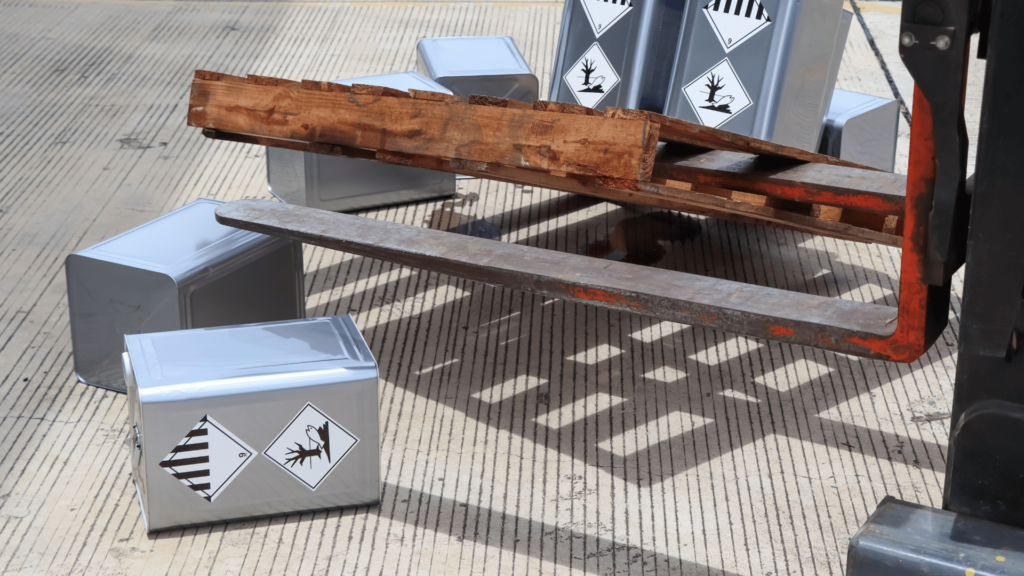Think forklifts are just oversized shopping carts? Think again
Operating a forklift might look easy, until you’re tipping forward like you’re starring in a slow-motion action scene. These machines demand more than just a steady hand, they require a deep respect for physics and some serious balance game. Whether you’re dodging racks in a warehouse or maneuvering through tight spaces on a job site, one wrong move and it’s chaos on wheels.
If you get the seesaw analogy, you’re halfway to mastering forklift stability
Let’s bring it back to the playground for a second. Picture a seesaw. Now, instead of giggling toddlers, imagine you’re balancing a half-ton pallet of mystery cargo.
- Fulcrum: The pivot point, the forklift’s front wheels do the honors.
- Center of Gravity: The invisible line where all the weight hangs out. When this shifts too far forward, it’s goodbye stability, hello forklift fail video.
Bottom line? It’s not just about how much weight you carry, but where you place it. That load hanging off the edge like it’s auditioning for a stunt show? Not a good idea.
This thing called the Stability Triangle could save your forklift from face-planting
Imagine a triangle between the two front wheels and the center of the rear axle, that’s your forklift’s comfort zone. Keep your center of gravity inside it, and you’re golden. Wander outside that zone, and you’re flirting with a tip-over.
Here’s what throws off the triangle:
– Overloaded forks
– Poorly balanced loads
– Turning with a raised load
– Lifting stuff too far out front
If your forklift had feelings, this would be its panic zone.
The higher you go, the sketchier things get, thanks to the Stability Pyramid
The Stability Triangle handles the basics, but once you start lifting? Now you’re in pyramid territory.
Lifting a load raises the center of gravity. And just like that, your forklift’s balance becomes shakier than a conspiracy theory podcast. The higher the load, the easier it is for your machine to tip over, especially during sharp turns or sudden stops. Keep it low, keep it stable, keep it drama-free.
It’s not just about static stability, forklifts are always moving so buckle up
Forklifts aren’t statues. You’re constantly turning, tilting, lifting, braking. And each of these moves shifts your center of gravity like it’s playing hide-and-seek with the laws of physics.
Dynamic forces are wild. Slam on the brakes or turn too fast, and you’re not just shaking things up, you’re setting the stage for a forklift disaster. And don’t even think about making tight turns with a raised load unless you want the whole building watching.
Inclines and uneven terrain? Welcome to forklift hell
Operating on ramps, slopes, or bumpy terrain throws your stability into chaos mode. Here’s how to not become a forklift horror story:
- Approach ramps head-on, not sideways. Ever.
- Don’t turn on a slope, unless “toppling dramatically” is on your to-do list.
- Secure sketchy loads. One bounce and that stack of boxes becomes workplace dodgeball.
Forklift safety isn’t just common sense, it’s controlled precision with physics on your side
Mastering forklift stability means more than just knowing your levers. It’s about understanding every force acting on your machine and using that intel to operate like a pro. From the seesaw flashback to the triangle and pyramid rules, it’s all about control, awareness, and never pushing your luck.
Stay within capacity. Keep loads low and centered. Move like you’ve got precious cargo, because you do. Your safety and your crew’s.
Before you load that pallet, get certified and do it right
Want to take your forklift game from “I think I got this” to “certified operator with Jedi reflexes”? Get into the Forklift: Certify and Comply Training Course. It’s where OSHA standards meet real-world know-how.
Expand your knowledge with our Forklift Safety: Dynamics and Balance Training Course.
This course gives you the inside scoop on the balance and physics behind every safe lift. But if you’re aiming to be that go-to safety leader in the warehouse, you’ll want the full picture. For a deeper dive into the techniques and tricks that keep things upright, check out our Forklift Operator Training Program.
References



